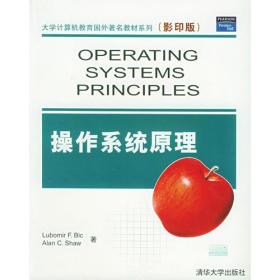
操作系统原理(影印版)
¥ 25 5.0折 ¥ 50 八五品
仅1件
北京海淀
认证卖家担保交易快速发货售后保障
作者Lubomir F.Bic;Alan C.Shaw
出版社清华大学出版社
出版时间2004-01
版次1
装帧平装
货号店32
上书时间2021-10-21
- 在售商品 暂无
- 平均发货时间 8小时
- 好评率 暂无
- 店主推荐
- 最新上架
商品详情
- 品相描述:八五品
图书标准信息
- 作者 Lubomir F.Bic;Alan C.Shaw
- 出版社 清华大学出版社
- 出版时间 2004-01
- 版次 1
- ISBN 9787302077244
- 定价 50.00元
- 装帧 平装
- 开本 其他
- 纸张 胶版纸
- 页数 543页
- 【内容简介】
-
本书详细讲述了从单处理机到分布式和并行计算机系统的基本思想、原则及概念,内容包括进程管理与协作、内存管理、文件系统与输入输出、系统保护与安全等。本书不仅从商用操作系统和研究型操作系统中选用了大量的例子来阐述有关的概念,而且针对各部分内容,给出了相应的编程实验练习,以增强读者的实际动手能力。
本书可用作计算机科学或计算机工程等相关专业的“操作系统”教科书,也可作为从事计算机工作的科技人员学习计算机操作系统的参考书。 - 【目录】
-
1 Introduction
1.1 The Role of Operating Systems
1.1.1 Bridging the Hardware/Application Gap
1.1.2 Three Views of Operating Systems
1.2 Organization of Operating Systems
1.2.1 Structural Organization
1.2.2 The Hardware Interface
1.2.3 The Programming Interface
1.2.4 The User Interface
1.2.5 Runtime Organization
1.3 Operating System Evolution and Concepts
1.3.1 Early Systems
1.3.2 Batch Operating Systems
1.3.3 Multiprogramming Systems
1.3.4 Interactive Operating Systems
1.3.5 Personal Computer and Workstation Operating Systems
1.3.6 Real-Time Operating Systems
1.3.7 Distributed Operating Systems
Part One Process Management and Coordination
2 Basic Concepts:Processes and Their Interactions
2.1 The Process Notion
2.2 Defining and Instantiating Processes
2.2.1 Precedence Relations Among Processes
2.2.2 Implicit Process Creation
2.2.3 Explicit Process Creation with fork and join
2.2.4 Process Declarations and Classes
2.3 Basic Process Interactions
2.3.1 Competition:The Critical Section Problem
2.3.2 Cooperation
2.4 Semaphores
2.4.1 Semaphore Operations and Data
2.4.2 Mutual Exclusion with Semaphores
2.4.3 Semaphores in Producer/Consumer Situations
2.5 Event Synchronization
3 Higher-Level Synchronization and Communication
3.1 Shared Memory Methods
3.1.1 Monitors
3.1.2 Protected Types
3.2 Distributed Synchronization and Communication
3.2.1 Message-Based Communication
3.2.2 Procedure-Based Communication
3.2.3 Distributed Mutual Exclusion
3.3 Other Classic Synchronization Problems
3.3.1 The Readers/Writers Problem
3.3.2 The Dining Philosophers Problem
3.3.3 The Elevator Algorithm
3.3.4 Event Ordering with Logical Clocks
4 The Operating System Kernel:Implementing Processes and Threads
4.1 Kernel Definitions and Objects
4.2 Queue Structures
4.2.1 Resource Queues in an Operating System
4.2.2 Implementations of Queues
4.3 Threads
4.4 Implementing Processes and Threads
4.4.1 Process and Thread Descriptors
4.4.2 Implementing Operations on Processes
4.4.3 Operations on Threads
4.5 Implementing Synchronization and Communication Mechanisms
4.5.1 Semaphores and Locks
4.5.2 Monitor Primitives
4.5.3 Clock and Time Management
4.5.4 Communication Primitives
4.6 Interrupt Handling
5 Process and Thread Scheduling
5.1 Organizating of Schedulers
5.1.1 Embedded and Autonomous Schedulers
5.1.2 Priority Scheduling
5.2 Scheduling Methods
5.2.1 A Framework for Scheduling
5.2.2 Common Scheduling Algorithms
5.2.3 Comparison of Methods
5.3 Priority Inversion
5.4 Multiprocessor and Distributed Scheduling
6 Deadlocks
6.1 Deadlock with Reusable and Consumable Resources
6.1.1 Reusable and Consumable Resources
6.1.2 Deadlocks in Computer Systems
6.2 Approaches to the Deadlock Problem
6.3 A System Model
6.3.1 Resource Graphs
6.3.2 State Transitions
6.3.3 Deadlock States and Safe States
6.4 Deadlock Detection
6.4.1 Reduction of Resource Graphs
6.4.2 Special Cases of Deadlock Detection
6.4.3 Deadlock Detection in Distributed Systems
6.5 Recovery from Deadlock
6.5.1 Process Termination
6.5.2 Resource Preemption
6.6 Dynamic Deadlock Avoidance
6.6.1 Claim Graphs
6.6.2 The Banker's Algorithm
6.7 Deadlock Prevention
6.7.1 Eliminating the Mutual-Exclusion Condition
6.7.2 Eliminating the Hold-and-Wait Condition
6.7.3 Eliminating the Circular-Wait Condition
Part Two Memory Management
7 Physical Memory
7.1 Preparing a Program for Execution
7.1.1 Program Transformations
7.1.2 Logical-to-Physical Address Binding
7.2 Memory Partitioning Schemes
7.2.1 Fixed Partitions
7.2.2 Variable Partitions
7.2.3 The Buddy System
7.3 Allocation Strategies for Variable Partitions
7.3.1 Measures of Memory Utilization
7.4 Managing Insufficient Memory
7.4.1 Memory Compaction
8 Virtual Memory
8.1 Principles of Virtual Memory
8.2 Implementations of Virtual Memory
8.2.1 Paging
8.2.2 Segmentation
8.2.3 Paging with Segmentation
8.2.4 Paging of System Tables
8.2.5 Translation Look-Aside Buffers
8.3 Memory Allocation in Paged Systems
8.3.1 Global Page Replacement Algorithms
8.3.2 Local Page Replacement Algorithms
8.3.3 Load Control and Thrashing
8.3.4 Evaluation of Paging
9 Sharing of Data and Code in Main Memory
9.1 Single-Copy Sharing
9.1.1 Reasons for Sharing
9.1.2 Requirements for Sharing
9.1.3 Linking and Sharing
9.2 Sharing in Systmes without Virtual Memory
9.3 Sharing in Paging Systems
9.3.1 Sharing of Data
9.3.2 Sharing of Code
9.4 Sharing in Segmented Systems
9.4.1 Sharing of Code and Data
9.4.2 Unrestricted Dynamic Linking
9.5 Principles of Distributed Shared Memory
9.5.1 The User's View of Distributed Shared Memory
9.6 Implementations of Distributed Shared Memory
9.6.1 Implementing Unstructured Distributed Shared Memory
9.6.2 Implementing Structured Distributed Shared Memory
Part Three File Systems and Imput/Output
10 File Systems
10.1 Basic Functions of File Management
10.2 Hierarchical Model of a File System
10.3 The User's View of Files
10.3.1 File Names and Types
10.3.2 Logical File Organization
10.3.3 Other File Attributes
10.3.4 Operations on Files
10.4 File Directories
10.4.1 Hierarchical Directory Organizations
10.4.2 Operations on Directories
10.4.3 Implementation of File Directories
10.5 Basic File System
10.5.1 File Descriptors
10.5.2 Opening and Closing Files
10.6 Device Organization Methods
10.6.1 contiguous Organization
10.6.2 Linked Organization
10.6.3 Indexed Organization
10.6.4 Management of Free Storgae Space
10.7 Principles of Distributed File Systems
10.7.1 Directory Structures and Sharing
10.7.2 Semantics of File Sharing
10.8 Implementing Distributed File System
10.8.1 Basic Architecture
10.8.2 Caching
10.8.3 Stateless Versus Stateful Servers
10.8.4 File Replication
11 Input/Output Systems
11.1 Basic Issues in Device Management
11.2 A Hierarchical Model of the Input/Output System
11.2.1 The Input/Output System Interface
11.3 Input/Output Devices
11.3.1 User Terminals
11.3.2 Printers and Scanners
11.3.3 Secondary Storage Devices
11.3.4 Performance Characteristics of Disks
11.3.5 Networks
11.4 Device Drivers
11.4.1 Memory-Mapped Versus Explicit Device Interfaces
11.4.2 Programmed Input/Output with Poling
11.4.3 Programmed Input/Output with Interrupts
11.4.4 Direct Memory Access
11.5 Device Management
11.5.1 Buffering and Caching
11.5.2 Error Handling
11.5.3 Disk Scheduling
11.5.4 Device Sharing
Part Four Protection and Security
12 The Protection and Security Interface
12.1 Security Threats
12.1.1 Damage Types
12.1.2 Vulnerable Resources
12.1.3 Attack Types
12.2 Functions of a Protection System
12.2.1 External Safeguards
12.2.2 Verification of User Identity
12.2.3 Communication Safeguards
12.2.4 Threat Monitoring
12.3 User Authentication
12.3.1 Approaches to Authentication
12.3.2 Passwords
12.4 Secure Communication
12.4.1 Principles of Cryptography
12.4.2 Secret-Key Cryptosystems
12.4.3 Public-Key Cryptosystems
13 Internal Protection Mechanisms
13.1 The Access Control Environment
13.2 Instruction-Level Access Control
13.2.1 Register and Input/Output Protection
13.2.2 Main Memory Protection
13.3 High-Level Access Control
13.3.1 The Access Matrix Model
13.3.2 Access Lists and Capability Lists
13.3.3 A Comprehensive Example:Client/Server Protection
13.3.4 Combining Access Lists and Capability Lists
13.4 Information Flow Control
13.4.1 The Confinement Problem
13.4.2 Hierarchical Information Flow
13.4.3 The Selective Confinement Problem
Part Five Programming Projects
I Process/Thread Synchronization
1 Project Overview
2 Setting Up a Race Condition
3 Solutions to the Critical Section Problem
3.1 Solution Using mutex Locks
3.2 Software Solution
4 Implementing General Semaphores
4.1 Solution Using Mutex Locks and Condition Variables
4.2 Software Solution
5 Bounded Buffer
6 Summary of Specific Tasks
7 Ideas for Additional Tasks
II Process and Resource Management
1 Project Overview
2 Basic Process and Resource Manager
2.1 Process States
2.2 Representation of Processes
2.3 Representation of Resources
2.4 Operations on Processes and Resources
2.5 The Scheduler
2.6 The Presentation Shell
3 Extended Process and Resource Manager
3.1 Timeout Interrupts
3.2 Input/Output Processng
3.3 The Extended Shell
4 Summary of Specific Tasks
5 Ideas for Additional Tasks
III Main Memory Management
1 Project Overview
2 The Memory Manager
2.1 Main Memory
2.2 The User Interface
3 The Simulation Experiment
3.1 Generating Request Sizes
3.2 Gathering Performance Data
3.3 Choosing a Block to Release
4 Summary of Specific Tasks
5 Ideas for Additional Tasks
IV Page Replacement Algorithms
1 Project Overview
2 Global Page Replacement Algorithms
3 Local Page Replacement Algorithms
4 Generating Reference Strings
5 Performance Evaluations
6 Summary of Specific Tasks
7 Ideas for Additional Tasks
V File System
1 Project Overview
2 The Input/Output System
3 The File System
3.1 Interface Between User and File System
3.2 Organization of the File System
3.3 The Directory
3.4 Creating and Destroying a File
3.5 Opening and Closing a File
3.6 Reading,Writing and Seeking in a File
3.7 Listing the Directory
4 The Presentation Shell
5 Summary of Specific Tasks
6 Ideas for Additional Tasks
Other Programming Projects
1 Timer Facility
2 Process Scheduling
3 The Banker's Algorithm
4 Disk Scheduling Algorithms
5 Stable Storage
Glossary
Bibliograhy
Author Index
Subject Index
点击展开
点击收起
相关推荐
— 没有更多了 —


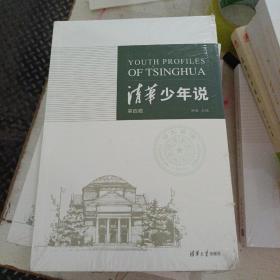




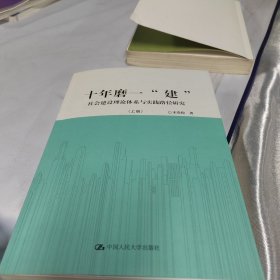






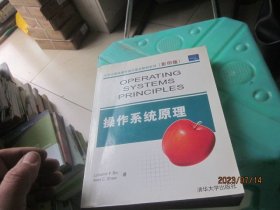



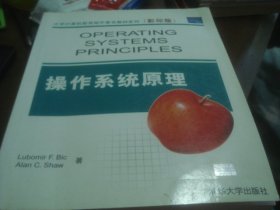

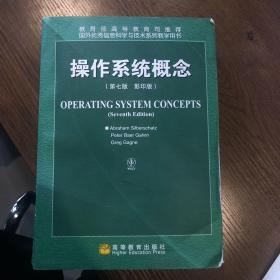
以下为对购买帮助不大的评价